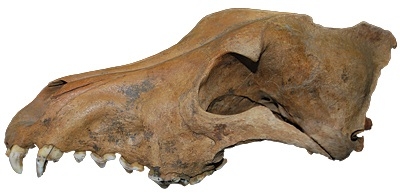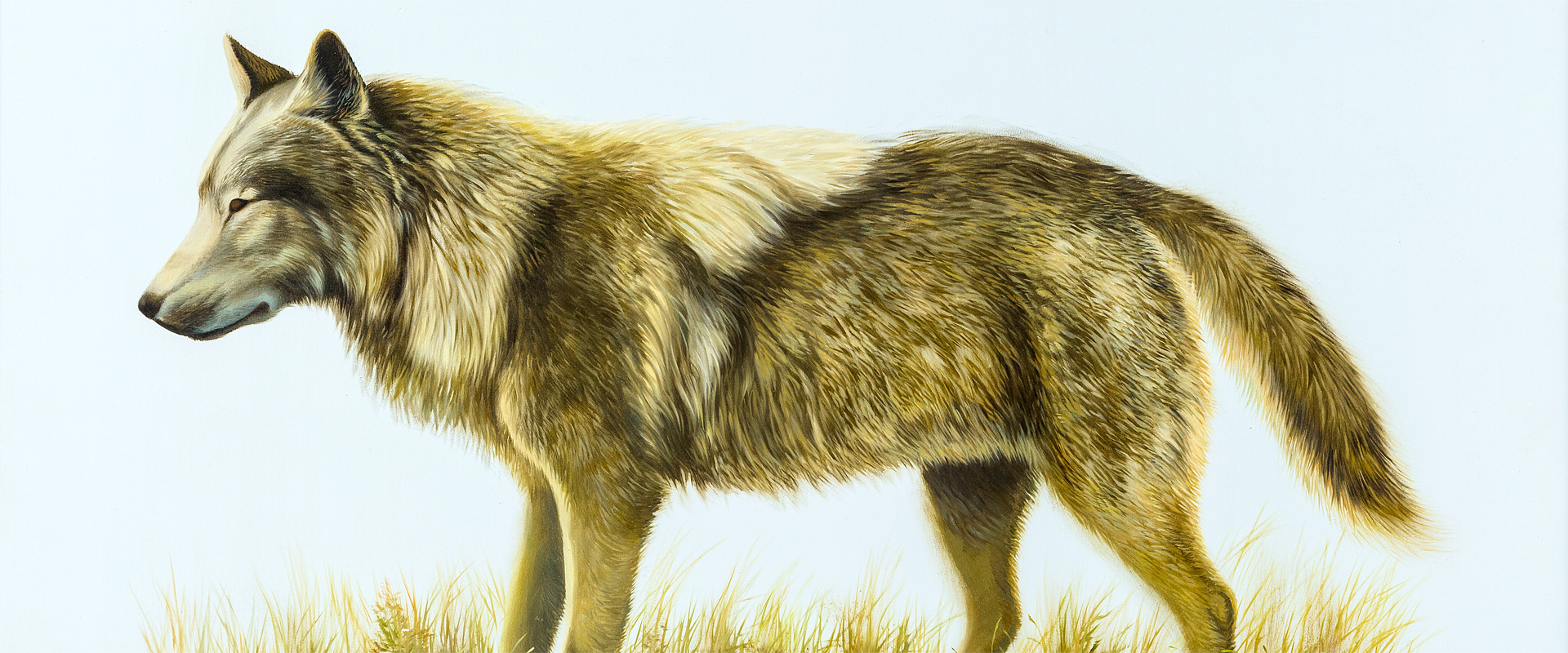Grey Wolf
Grey wolves are probably the most iconic carnivores in the present-day boreal forest and Arctic tundra. They are social animals that form packs and prey on most animals in the North today, including large caribou and moose. Fossils from Yukon indicate that they were also common on the Mammoth Steppe. In fact, grey wolves are the most commonly found carnivore fossils in Beringia. They were one of the few North American predators to survive from the Peistocene until the present day.

Grey wolves are found living all across North America, Asia, Europe and into Africa. It is likely that grey wolves evolved in Eurasia during the early part of the Pleistocene and eventually made their way across the Bering land bridge into North America.
Yukon's Modern and Ice Age Wolves
Although ice age fossils of the grey wolf are commonly found in Beringia, surprisingly, these bones are not from the direct ancestors of the wolf populations living in Yukon today. Recent work on the DNA and body characteristics from the grey wolf fossils and present day animals across North America reveals that this species underwent dramatic changes at the end of the Ice Age.
The ice age grey wolves of Yukon were more closely akin to those living today in Eurasia, demonstrating the close relationship between animals across Beringia during the Ice Age. As the Bering land bridge flooded near the end of the Ice Age, Yukon populations were cut off from those in Eurasia. Unable to cope with the period of rapid environmental change, ice age grey wolves went extinct in Yukon and Alaska around 12,000 years ago. Soon thereafter, populations of grey wolves that were centred south of the great ice sheets moved northward and recolonized Yukon and Alaska. This population eventually gave rise to all the grey wolves found today in Yukon.
Did you know?
The ice age grey wolves of Yukon is not to be confused with the well known dire wolf (Canis Dirus). The dire wolf only lived south of the great ice sheets in North America, and was about 25% larger than present-day grey wolves.
Measurements of fossil grey wolf skulls revealed that the ice age populations of Yukon and Alaska differed significantly from those in the rest of North America. The Beringian wolves tended to have short, broad mouths with broad cheek teeth relative to their overall size. These skull features were adaptations to producing very large bite forces, suggesting specialization for killing or scavenging large prey. In addition, Beringian fossil skulls were found to have many more broken and heavily worn teeth. This is further evidence for consumption of bones similar to present day hyenas in Africa. Altogether, this new evidence paints the picture of a highly specialized meat- and bone-eating wolf that went extict along with the other large mammals in Beringia.
Want to keep exploring? Check out the Beringian Research Notes about ancient northern wolves.

